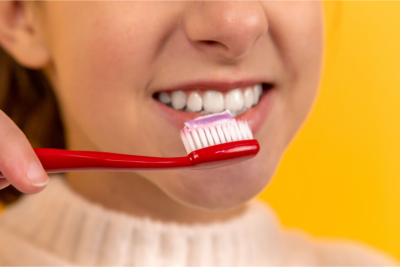As parents, ensuring our children's oral health is crucial for their overall well-being and confidence.
While children's dental care may seem straightforward, various oral health issues can arise during their early years.
Identifying and addressing these concerns promptly can lead to better dental outcomes and a bright smile for years to come.
1. Dental Cavities:
Dental cavities, also known as tooth decay, are among the most prevalent oral health issues in children.
Consuming sugary foods and drinks, inadequate oral hygiene, and irregular dental check-ups contribute to cavities.
Regular brushing, flossing, and limiting sugary treats can help prevent cavities and maintain healthy teeth.
2. Gum Disease:
Gum disease, or gingivitis, is characterized by swollen, red, and bleeding gums.
Poor oral hygiene allows plaque to build up, leading to gum inflammation.
Regular dental visits, proper oral care, and the use of fluoride toothpaste can prevent and manage gum disease in children.
3. Tooth Eruption Problems:
Some children may experience challenges when their permanent teeth start erupting.
Crowded or misaligned teeth can affect their bite and overall oral health.
Early orthodontic evaluation can identify potential issues and enable timely intervention for optimal dental development.
4. Thumb Sucking:
While thumb sucking is normal in young children, prolonged habits can lead to dental problems. Sustained thumb sucking may cause misalignment and affect the proper growth of the jaws. Gentle guidance and positive reinforcement can help children break this habit over time.
5. Tooth Sensitivity:
Children can experience tooth sensitivity to hot or cold substances due to weakened enamel, gum recession, or tooth erosion. A child-friendly toothpaste for sensitive teeth and dental sealants can alleviate discomfort and protect enamel.
6. Tongue Thrusting:
Tongue thrusting, where the tongue pushes against the front teeth during swallowing,
can lead to orthodontic issues and misalignment. Speech therapy and orthodontic intervention can help correct this habit.
7. Dental Trauma:
Accidents or falls during play or sports can result in dental trauma, such as chipped or knocked-out teeth.
Wearing mouth guards during sports activities can significantly reduce the risk of dental injuries.
8. Dental Anxiety:
Many children may experience dental anxiety or fear, leading to challenges during dental visits.
A child-friendly dental office, communication, and positive reinforcement can help ease their
fears and create a comfortable environment for dental care.
To ensure your child's oral health remains in top condition, it's essential to maintain regular dental check-ups,
encourage proper oral hygiene practices, and address any concerns promptly.
A pediatric dentist can provide specialized care, guidance,
and preventive measures tailored to your child's unique needs, ensuring they grow up with a happy, healthy smile.
Remember, a foundation of good oral health sets the stage for a lifetime of confident and beautiful smiles.
By taking proactive steps and addressing any oral health issues early on,
you can ensure your child's teeth and gums remain healthy and vibrant throughout their childhood and beyond.




